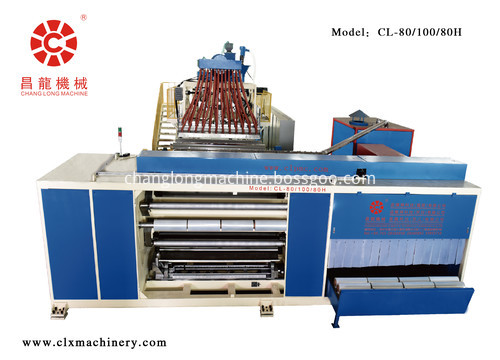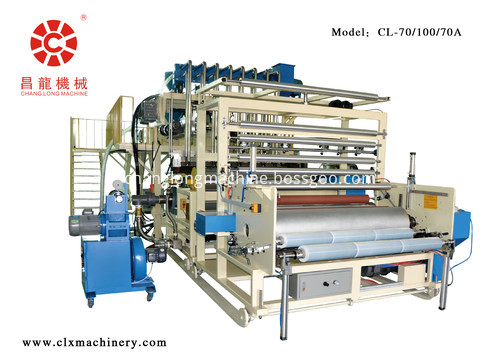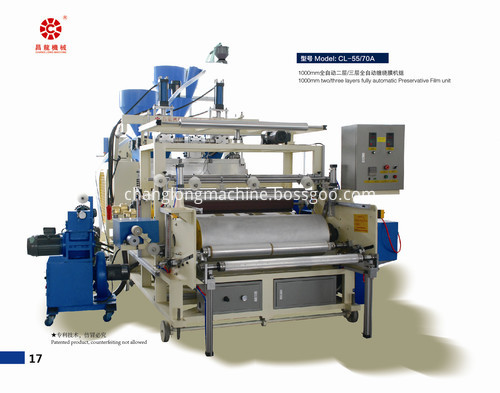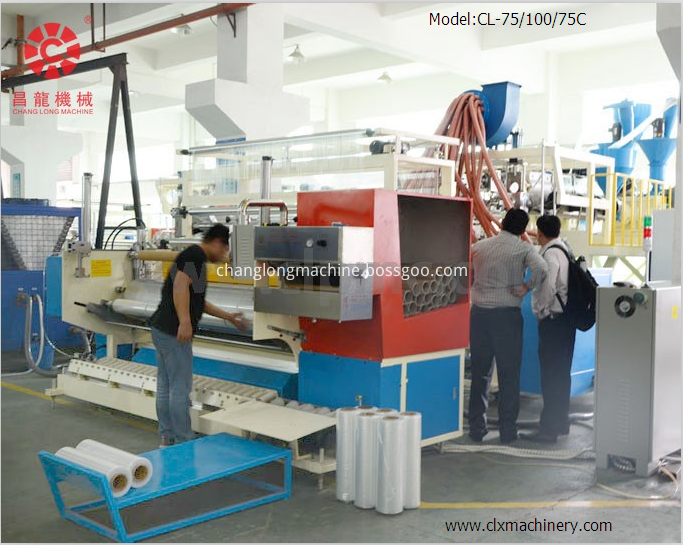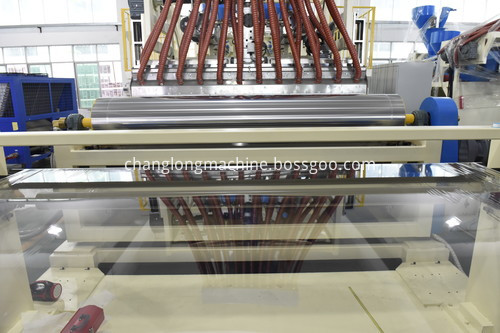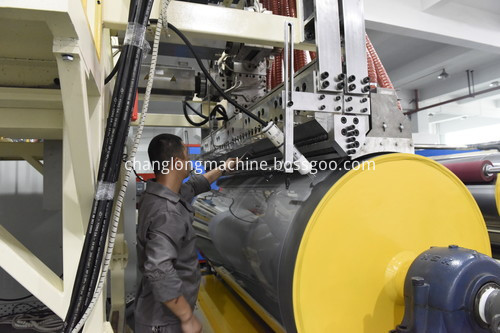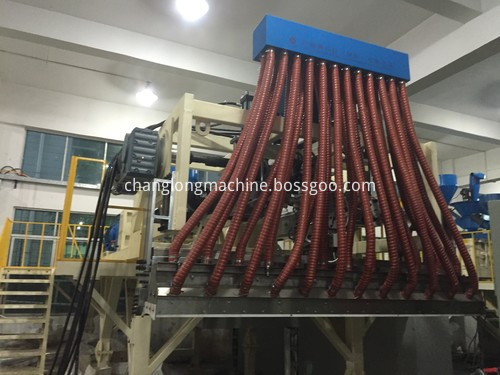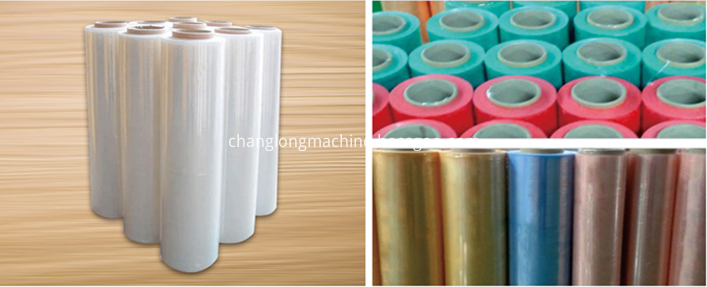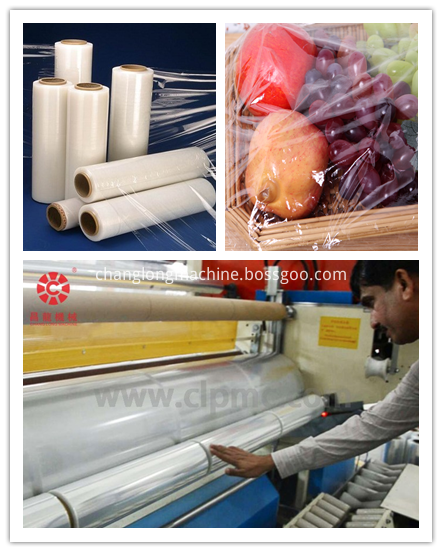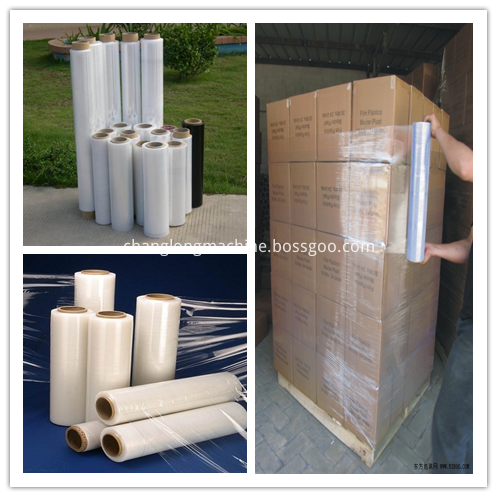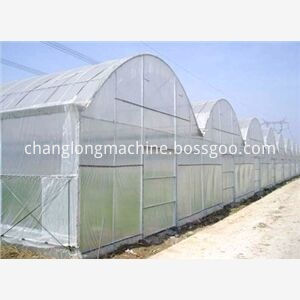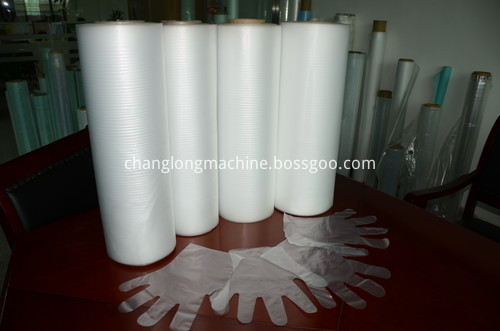1Inverter air conditioning refrigeration heating principle 1.1 Refrigeration and cooling heating adopts the principle of vapor compression refrigeration cycle. When the air conditioner is cooled, the refrigerant (R22 or other refrigerant) evaporates and absorbs the environment under the corresponding low pressure in the evaporator (indoor heat exchanger). The heat and its own enthalpy increase to superheated steam (isostatic steaming), which is then sucked into the compressor and compressed into high temperature and high pressure refrigerant superheated steam, which is directly sent to the condenser (outdoor heat exchanger), and the outdoor unit is axially flowable. The electric fan heats the outdoor air heat exchanger to the outdoor heat exchanger, and removes the heat of the refrigerant through the outdoor air, so that the high temperature and high pressure refrigerant vapor condenses in the outdoor heat exchanger to become the low pressure and low temperature. Refrigerant liquid (isostatic condensation). The medium-temperature high-pressure low-pressure refrigerant liquid is throttled and depressurized by the electronic expansion valve (equal throttle), and becomes a low-pressure low-pressure refrigerant vapor (a small part has been vaporized into a gas), and after entering the steamer through the connecting pipe In the vaporizer, the low pressure expands and vaporizes, the refrigerant absorbs the heat of the indoor heat exchanger through the pipe wall, and the indoor hot air is sucked into the indoor heat exchanger by the axial fan of the indoor unit, and is sent to the indoor heat exchanger after cooling down. indoor. Thereby achieving the purpose of refrigeration. 1.2 The heating and heating principle generally adopts two types of electric heating and heat pump cooling. Electrothermal cooling uses electric heating tubes as heating elements to heat the flowing air in the indoor unit, and sometimes as an auxiliary measure for heat pump cooling. The heat pump heating process is to install an electronic four-way valve in the refrigeration system for cooling and heating commutation control. The direction of circulation of the refrigerant is changed by a reversing valve. The high-temperature and high-pressure refrigerant gas from the compressor is first passed through a heat exchanger in the room to allow the heat of condensation to heat the air of the indoor unit, and the condensed refrigerant liquid enters the heat exchanger in the outdoor unit through the electronic expansion valve. The heat of the environment is absorbed, so as to achieve the purpose of absorbing heat from the outdoor environment and releasing heat from the room. Because the heat of the heat pump is only from the outdoor heat to the indoor heat, the temperature of the outdoor environment directly affects the heating effect of the air conditioner. When the outdoor temperature is lower than 0 °C, the actual cooling capacity drops by about 20%. When the temperature is -5 °C, the actual cooling capacity drops by about 30%. 1.3 Defrost Inverter air conditioner defrost principle In the winter heating operation state, when the temperature outside the temperature drops to 5 ° C or lower, the evaporation temperature of the outdoor unit heat exchanger will be lower than 0 ° C, then the air in the outdoor environment The water will frost on the surface of the heat exchanger. As the time increases, the frost layer will become thicker and thicker, and the ability of the heat exchanger to absorb heat from the environment will become worse and worse, resulting in a decrease in the thermal performance of the indoor mechanism. The defrost system is designed to prevent this from happening. Conventional air conditioners generally use shutdown defrosting. The inverter air conditioner adopts the non-stop defrost method. Stop defrosting is to stop the indoor fan, change the refrigerant flow through the four-way valve, change the heating operation to the cooling operation, let the high-temperature high-pressure refrigerant vapor from the compressor flow to the heat exchanger of the outdoor unit, and make the outdoor The heat exchanger temperature rises and the frost layer dissolves, achieving the purpose of defrosting. The indoor unit cannot perform the heating operation during the defrosting process. Non-stop defrost is a method used in inverter air conditioners. It adopts advanced electronic expansion valve throttling technology. The indoor unit continues to perform heating operation (condensation and heat dissipation), and the high-temperature and high-pressure refrigerant vapor from the compressor is partially removed. The frost solenoid valve flows to the outdoor unit heat exchanger, so that the outdoor unit heat exchanger temperature rises and the frost layer dissolves, and the other part still flows to the indoor mechanism heat. 1.4 Dehumidification and dehumidification is mainly used for dehumidifying wet air when the humidity is high in summer. Through the cooling operation, the surface temperature of the indoor heat exchanger is lower than the dew point temperature of the room air, so that part of the water vapor condenses into a liquid water surface and flows to the outside, thereby reducing the indoor temperature. The purpose of air humidity. In order to avoid too much room temperature fluctuation due to dehumidification and increase comfort, the speed of the indoor fan can be reduced and the compressor can be operated intermittently. 2 four main technologies of inverter air conditioner: 2.1 DC speed regulation (frequency conversion) technology: principle: DC inverter compressor is used, the stator of the compressor generates a rotating magnetic field and the permanent magnet magnetic field of the rotor directly acts to realize the compressor operation. Features: high efficiency and low noise. The efficiency of the DC inverter compressor is 10% to 30% higher than that of the AC inverter compressor, and the noise is 5 dB to 10 dB. 2.2 AC frequency conversion technology: Principle: AC variable frequency compressor is used to rotate the rotor through the interaction of the magnetic field between the stator and the rotor. However, its special design makes it possible to change the speed of the motor by changing the frequency and voltage of the power supply over a wide range. Features: Compared with fixed-frequency air conditioners, AC inverter air conditioners have higher efficiency, lower noise and more sensitive control. Its cost is lower than that of DC inverter air conditioners. 2.3 Dual-rotor compressor technology: The dual-rotor compressor uses two rotors in a symmetrical direction and has two compression chambers. 2.4 advanced electronic expansion valve throttling technology, active with the change of the capacity of the inverter compressor, can also solve the non-stop defrost 3. The inverter air conditioner has the following advantages compared with the ordinary air conditioner performance. The inverter air conditioner performance has the automatic adaptive load compared with the ordinary air conditioner. Change, frequency reduction control, temperature fluctuation range 1 °C, soft start, starting current is very small, ordinary air conditioner starting current is greater than rated current. It is automatically maintained at low frequency, which is 30% less than ordinary air conditioners. It can operate normally when the voltage is as low as 150V, and the low voltage operation performance is good. The refrigeration and heating speed are fast, and the heat-cooling ratio is greater than 140%. When the temperature is low at -10 ° C, the heating effect is still good. Defrost performance is accurate and fast, requiring only half the time of conventional air conditioning. Spring dehumidification performance low-frequency operation, can only dehumidification basically no cooling, no cold feeling, healthy dehumidification. When there are many people in the room and need to run at full load, they can automatically run at high frequency to achieve rapid cooling. The protection function is comprehensive. Automatic control performance is truly blurred, digital network 3.1 Ability to adapt to load The cooling capacity of conventional air conditioners decreases with the rise of outdoor temperature, and the room heat load rises with the rise of outdoor temperature. Thus, the outdoor temperature is higher, this is needed When the air conditioner outputs more cooling capacity to the room, the conventional air conditioner often has insufficient cooling capacity, which affects comfort. When the outdoor temperature is low, the air conditioner needs to output a small amount of cooling to the room. The conventional air conditioner often has excessive cooling capacity and is wasted. electricity. The inverter air conditioner can control the speed of the compressor and the electronic expansion valve to automatically control the degree of opening after the tracking of the superheat degree, so that the cooling capacity can rise, decrease and decrease with the increase of the outdoor temperature, thus achieving the cooling capacity. Automatic matching with the heat load of the room improves comfort and saves electricity. The principle of adjusting the cooling capacity of the inverter air conditioner is as follows: under certain working conditions, the cooling capacity is proportional to the mass flow rate of the refrigerant, that is, Q=qm type, Q-cooling quantity q-refrigerant unit mass cooling quantity m-refrigerant mass flow rate is certain Under the working condition, the mass flow rate of the refrigerant is proportional to the compressor speed, that is, the mass flow rate of the f-refrigerant in the m=f(N) formula is a function of the compressor speed, and the relationship of the compressors of different structures is different. -Compressor speed can be adjusted by adjusting the compressor speed to adjust the air conditioner cooling capacity. This is the principle of variable frequency energy regulation of DC or AC inverter air conditioner. 3.2 Temperature adjustment method Take the cooling state as an example, which is the temperature adjustment method of the conventional air conditioner, where T is the indoor temperature, Ts is the set temperature, and the set temperature is stopped, and the indoor temperature is higher than the set temperature by 1 degree. The compressor is turned back on. The temperature adjustment method of the inverter air conditioner, the operating frequency is reduced by one step for every 0.5 degree decrease of the room temperature. On the contrary, for every 0.5 degree rise of the room temperature, the running frequency is increased by one step, that is, the higher the room temperature, the higher the running frequency, so that the air conditioner is fast. Refrigeration, the closer the room temperature is to the set temperature, the smaller the operating frequency, and the smaller the cooling capacity provided, to maintain the room temperature near the set temperature, and the temperature fluctuation is small. 3.3 Start-up, running performance, respectively, the speed curve of the conventional air conditioner and inverter air conditioner at startup. Conventional air conditioners start at a fixed frequency and operate at a fixed speed. Inverter air conditioner low frequency start, frequency conversion operation. 3.4 Energy-saving conventional air conditioner on/off method control, compressor switching is frequent, and power consumption is high. The inverter air conditioner automatically maintains the room temperature at a low frequency to keep the room temperature constant, avoiding the frequent opening of the compressor, and saving about 30% compared with the conventional air conditioner. 3.5 Low-voltage operation performance When the voltage of the conventional air conditioner is lower than 180V, the compressor can not be started, and the inverter air conditioner starts at a low voltage when the voltage is low, reducing the load at startup, and the minimum starting voltage can reach 150V. 3.6 Thermal cooling is the same as the speed of conventional air conditioning refrigeration and heating compressors. It can only improve the thermal cooling ratio through system matching, which has great limitations. When the inverter air conditioner is heated, the compressor speed is much higher than that during cooling, so the heat-cooling ratio can be as high as 140% or more. (The maximum operating frequency during heating is often about 20Hz higher than the maximum operating frequency of cooling.) 3.7 Low temperature heating effect The speed of conventional air conditioner compressor is constant, the compressor power below 0 °C is very low, there is actually no heating effect; It operates at high frequency at low temperature, and changes the opening degree of the electronic expansion valve to control the low pressure. The heating capacity is 3 or 4 times that of the conventional air conditioner. 3.8 Full-load operation The conventional air-conditioner compressor has only one type of speed, and it is impossible to achieve strong operation at full load. The inverter air conditioner can achieve high-frequency operation when there are many people, when starting up, or when the temperature difference between indoor and outdoor is large. 3.9 Protection function The conventional air conditioner needs to stop the compressor every time the current protection occurs. The inverter air conditioner is buffered with appropriate frequency reduction operation whenever protection occurs, which can realize non-stop protection and does not affect the user's use. 4 national relevant standards, ordinary fixed-speed air conditioners must be produced and sold in accordance with the national standard "GB12021.3-2004" from March 1st, and require the "China Energy Efficiency Label". The National Institute of Standardization has completed the Shanghai Local Trial Standard for Energy Efficiency of Inverter Air Conditioners this year. "DB31355-2005 variable speed (frequency conversion) room air conditioner energy efficiency limit value and energy efficiency rating." The standard will be implemented from June 1, 2006. The main content of the standard is to divide the energy efficiency level of inverter household air conditioner into five grades. Level 1 indicates that the product energy efficiency has reached the international advanced level, and grade 5 is the market access limit indicator. The target will be restricted to the market. The specific indicators are shown in the table below. In addition to frequency conversion control, inverter air conditioner technology also adopts various advanced technologies such as electronic expansion valve, stepping motor, various sensors, advanced humidity control technology, humanized design to adapt to various conditions of human body comfort, etc. Air conditioners can not be compared to various advantages, so they are more and more popular in the market, and there is a tendency to replace ordinary air conditioners. The inverter air conditioner has superior cooling and heating performance, and is more energy-efficient than the ordinary fixed-frequency air conditioner, but the price is still high, about 2,000 thousand yuan higher than the ordinary air conditioner, and some low prices in the market are called "inverter air conditioners." "In fact, the main components are shrinking water products, and some even have electronic expansion valves. They are replaced by capillaries. The efficiency of purchasing air conditioners is generally above 3.5, 145-170W/m2. There are three high-purity merchants as well.
ChangLong winding stretch film machine is a
kind of packaging machinery with electrical equipment, using LLDPE, PE, PP, CPE
and so on material as raw material to manufacture the single/double-side
self-sticky single-layer, double-layer, three-layer or five-layer co-extrusion stretch
wrapping film with film width from 500mm to 2000mm, which utilizes the film`s good
winding tension, anti-pricking ability, and impact strength to pack various
bulk objects or self-contained objects as a whole packaging. This stretch
wrapping film machine can also manufacture protective film, PE preservative
film, embossing film, silage film and other films by changing some machine
parts like T-die or assistant machine.
*Related Products:stretching cling film machine,film wrapping machinery,film stretch production line.
Machine Pictures:
Various Films:
Hand Stretch Film Machinery,Packaging Stretch Film Machinery,PE Stretch Film Machine,Plastic Stretch Film Machine CHANGLONGXING SCIENCE & TECHNOLOGY (SHENZHEN) CO.,LTD , http://www.clxmachinery.com
